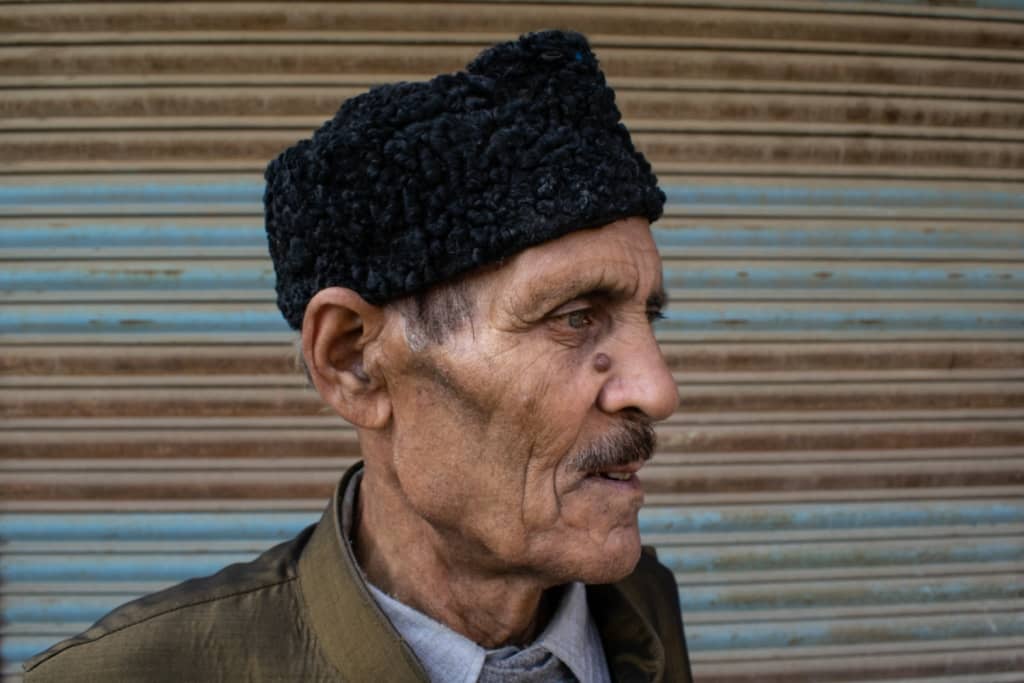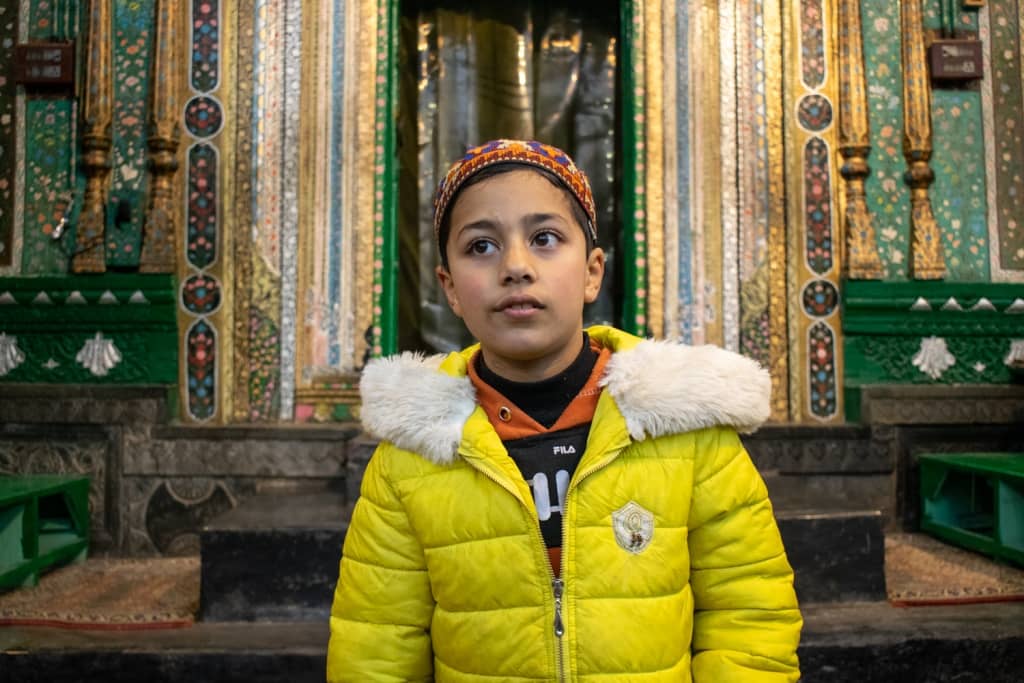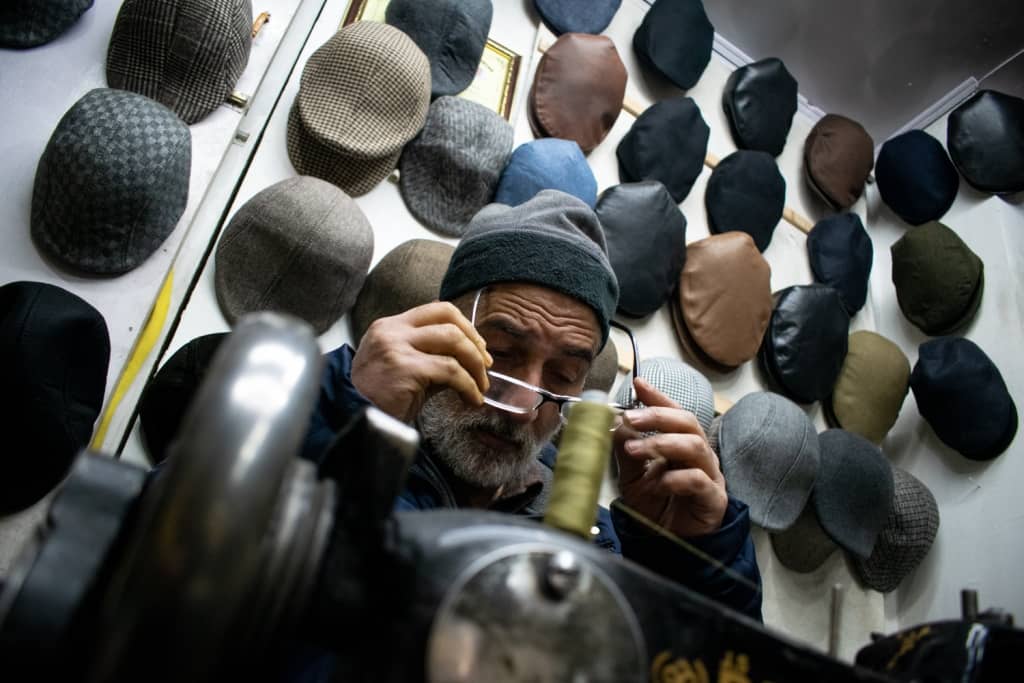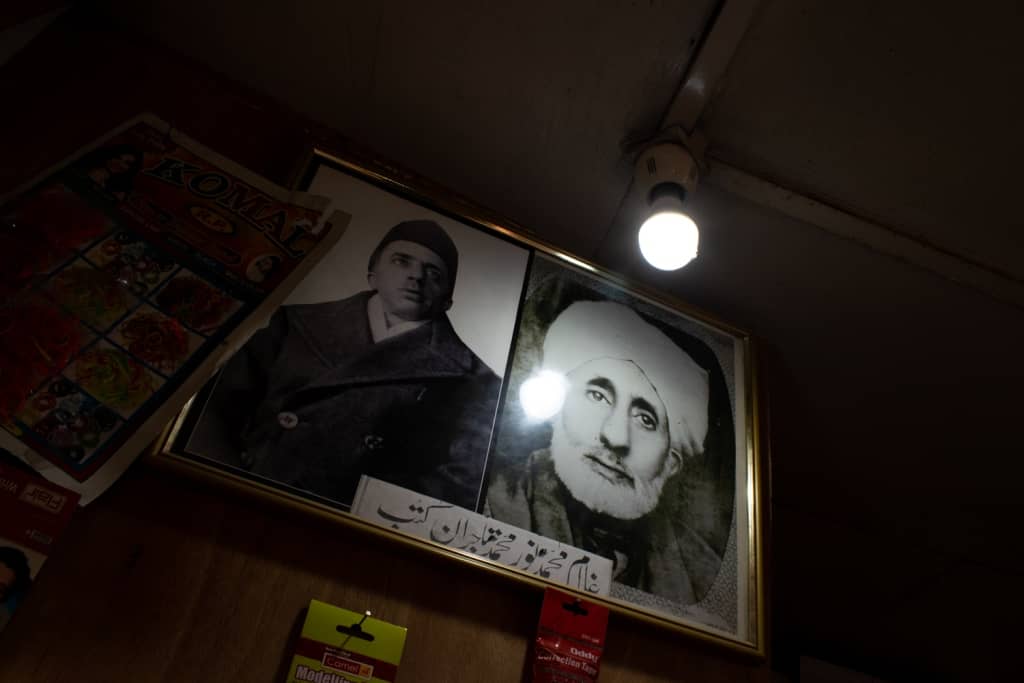In Pictures | Season of Headgears in Kashmir

Mumin Gul is a documentary photographer and multimedia journalist based…



 +6
+6 From voguish hat to warrior headgear, Kashmir wears in all in the spell of chill.
A proscribed drone shot would’ve shown a freeze frame dotted with the vibrant hatted heads. That’s how winter looks like in the valley grappling with the biting cold.
Head with hat is grasped as a ‘top’ defence against the “General Winter”, as they call it since the Mughal period. And that headgear has to have style as well as substance.
But seasonal grace apart, Kashmir has an inclination towards headgears.
The nostalgic and iconic image of Kashmiri often reminds one of a culturally-rich era. Heads wearing a white netted conical cap with some design or a plain white dastar (turban) was a common sight in Kashmir a few decades back.
Many aspects of Kashmiri culture come from Central Asia. The famous Silk Route connected and influenced its way through Kashmiris society. It brought the Turkish, Afghan, Mughal influence to Kashmir.
Support Our Journalism
You are reading this because you value quality and serious journalism.
But, serious journalism needs serious support. We need readers like you to support us and pay for making quality and independent journalism more vibrant.

But now, because of the multicultural influence, people have accepted parts of different cultures. One of which has been the Karakul hat.
Pronounced as Qarakuli in South Asia, the hat is made from the fur, Karakul breed of sheep, and is referred to as Qara Kulcha, or Persian lamb. Meaning Black fur in Turkic, Karakul-type hats are common among Turkic peoples.
But now, these hats are found on the heads of the imams, bureaucrats, and on the head of the groom. Over the years, a new style of Karakuli has evolved in the shape of a sphere.

And then there’s the Pakol hat, made famous by the war of attrition in Afghanistan.
A tribal gunman in the rocky mountains portrayed as the aggressor, wearing a round-topped hat, usually made of wool, is an image perpetuated on the TV screens of the US after their withdrawal from the land.

But romanticism apart, wearing a hat during winters is binding. The seasonal necessity makes it a symbol of the tribe having its own unique way of living.


During the season, the pick cap remains in vogue.
Usually sported by the oldies, these hats come in different materials. And among them, leather remains more trendy and popular.

Being a Muslim-majority region, Kashmir prefers hats for faithful reasons as well. Devotees in drove stride in sanctums with hatted heads. Seen as a sign of nobility, the covered heads often evoke salutation.

“If we look at other states like Himachal, they won’t wear any other cap but their own,” says Ali Muhammad, who has been making caps for the last four decades.
“However, a Kashmiri wears whatever he finds appealing. It could be a Russian, Turkish, Afghani cap. This makes us truly global!”

The elders framed on the rundown walls of the medieval shops continue to make their headgear appearance feel as revered as it could be. They carry the classic grace of the times when the hat on the head was seen as a status symbol.

And those surviving in the present whirlpool have come to adorn a moniker identity almost associated the way they hat it.

And with headgears already flooding markets as one of the preferred merchandise of the season, they’ve their takers, a lot of them!
Status might’ve gone, the hatters say, but the substance stays, and so does the signature style of headgears.
Mountain Ink is now on Telegram. Subscribe here.
Become Our Ally
To help us strengthen the tradition of quality reading and writing, we need allies like YOU. Subscribe to us.
Mumin Gul is a documentary photographer and multimedia journalist based in Kashmir. His focus mostly lies in long-term photo projects. He is currently a multimedia intern at the Mountain Ink.



























